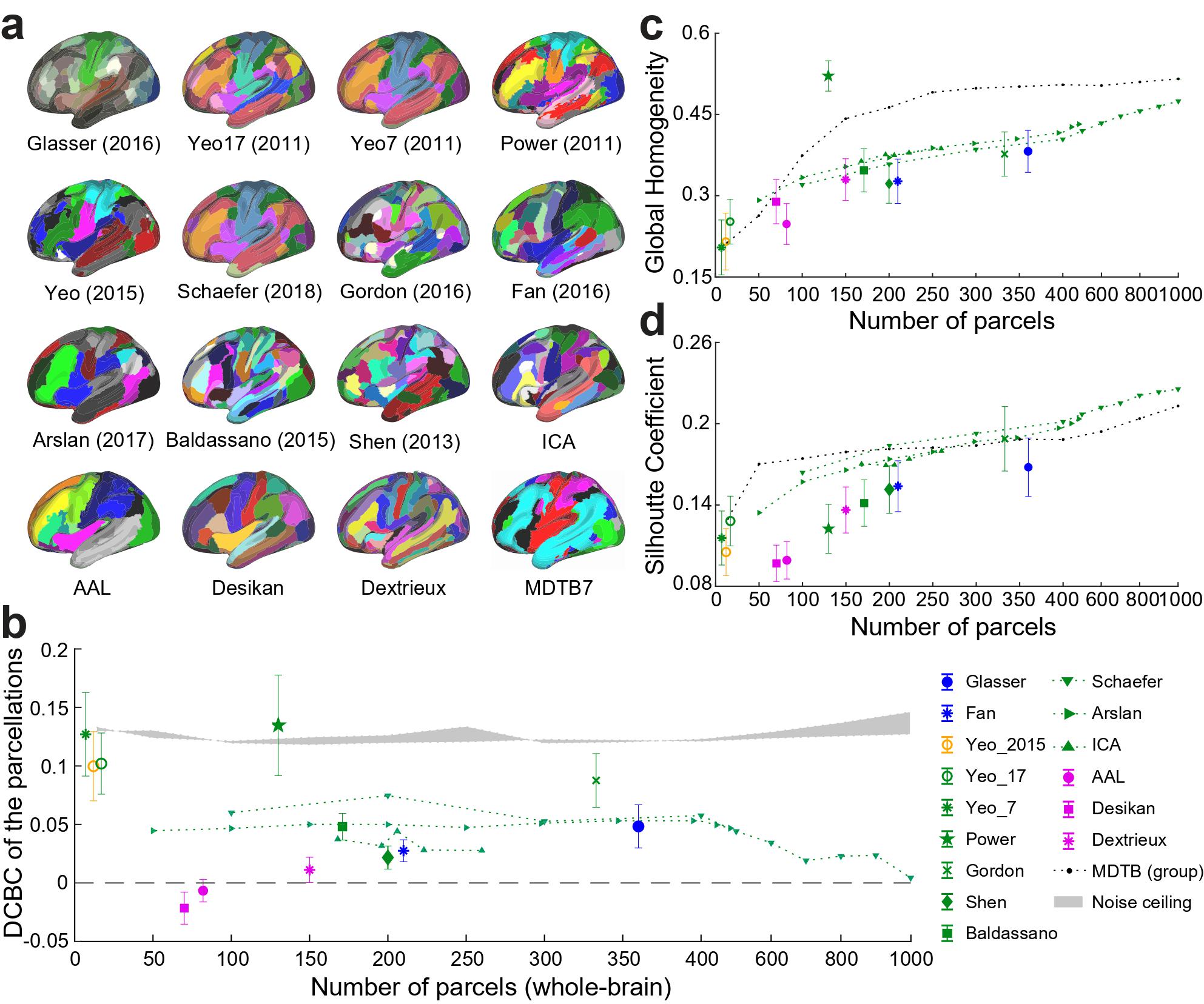An important goal of human brain mapping is to define a set of distinct regions that can be linked to unique functions. Numerous brain parcellations have been proposed, using cytoarchitectonic data, structural or functional Magnetic Resonance Imaging (fMRI). The intrinsic smoothness of the brain data, however, poses a problem for current methods seeking to compare different parcellations to each other. For example, criteria that simply compare within-parcel to between-parcel similarity provide even random parcellations with a high value. Furthermore, the evaluation is biased by the spatial scale of the parcellation. To address this problem, we propose the Distance Controlled Boundary Coefficient (DCBC), an unbiased criterion to evaluate discrete parcellations. We employ this new criterion to evaluate whether existing parcellations of the human neocortex can predict functional boundaries on a rich multi-domain task battery. We find that common anatomical parcellations do not perform better than chance, suggesting that task-based functional boundaries do not align well with sulcal landmarks. Parcellations based on resting-state fMRI data perform well; in some cases, as well as a parcellation defined on the evaluation data itself. Finally, multi-modal parcellations that combine functional and anatomical criteria perform substantially worse than those based on functional data alone, indicating that functionally homogeneous regions often span major anatomical landmarks. Overall, the DCBC advances the field of functional brain mapping by providing an unbiased metric that compares the predictive ability of different brain parcellations to define functionally and anatomically homogeneous brain regions.

Getting started of the toolbox
Installation and python dependencies:
- nibabel (version>=2.4) https://nipy.org/nibabel/
- scipy (version>=1.3.1) https://www.scipy.org/
- numpy (version>=1.17.4) https://numpy.org/
- matplotlib (version>=3.0.2) https://matplotlib.org/
Download and Usage: please find out more details of DCBC toolbox usage and download at GitHub repository.
Distance metrics
The toolbox requires user to put custom distance metrics file paired to the surface topology into distanceMarix folder. However, these distance files are usually too large or need longer time to compute. Therefore, we prepared several pre-computed distance metric files of fs-LR 32k template cortical mesh in a single distance.zip file for download. In this zip file, there are three different distance metrics as following:
| Distance Name | Description |
|---|---|
distSphere_sp.mat |
The distance matrix between each of the vertex pairs on the cortical surface in fs-LR 32k template projected on the standard sphere. |
distAvrg_sp.mat |
This distance matrix is calculated using Dijkstra's algorithm (Dijkstra et al., 1959) to estimate the shortest paths between each pair of vertices on each individual cortical surface. We then used the mid-cortical layer which is the average of the pial and white-gray matter surface. |
distGOD_sp.mat |
This distance matrix is computed using Connectome Workbench command -surface-geodesic-distance to compute the GOD distance between each pair of the cortical vertices. |